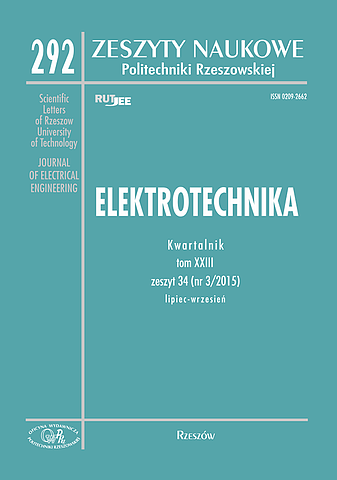Abstract
The paper presents the application of the method used for the analysis of ARIMA time series with trend and seasonality. Time series is one of the types of statistical series, which can be defined as a series of observations of a phenomenon in the following units of time (years, quarters, months, etc.). Time series analysis based on the main idea that a further consideration of the characteristics (variable) represent the more measurements made in the same unit of time (at regular intervals). The independent variable is the time (unit of time). Observing different phenomena (including related to the economy electricity) often want to know whether and how they are changing over time, that is what is their dynamics. Time series analysis is mainly used to make decisions about the future. Considered phenomenon may be subject to certain regularities, which detect and description is the main objective of the analysis of time series. In many cases, time series models are used to apply for the future of the studied phenomenon (to predict). Forecasting is statistically inference about future values of the time series, which is based on the analysis of data or time values which take under consideration the statistical characteristics (variables). At the time domain analysis in time series can extract some components (constant average level of the phenomenon, a trend long-term cycles, seasonal fluctuations, fluctuations in short-term, interventions, random component (random disturbance)), and not all of them must be analyzed in a specific number of. Forecasting method depends on the components of the time series. The results of calculations using the ARIMA model is presented using STATISTICA v. 10.0.
References
[2] Nowak E., Prognozowanie gospodarcze, Agencja Wyd. PLACET, Warszawa 1998
[3] Kot S., Jakubowski J., Sokołowski A., Statystyka, Wyd. Difin, Warszawa 2011
[4] Sokołowski A., Analiza szeregów czasowych i prognozowanie, Statistica w badaniach naukowych i nauczaniu statystyki, Statsoft, Kraków 2010
[5] http://www.statsoft.pl
[6] http://tge.pl/pl/155/raporty-miesięczne, Urząd Regulacji Energetyki, Raporty Roczne Prezesa URE, dostęp kwiecień 2015r.
[7] http://www.ure.gov.pl/
[8] Nowak E., Prognozowanie gospodarcze. Metody, modele, zastosowania, przykłady. Agencja wydawnicza Placet, Warszawa 1998
[9] Cieślak M., Prognozowanie gospodarcze, metody i zastosowania, Wydawnictwo Naukowe PWN, Warszawa 2005
[10] Snarska A., Statystyka, ekonometria, prognozowanie, Wydawnictwo Placet, Warszawa 2005
[11] Sobczyk M., Statystyka, Wydawnictwo Naukowe PWN, Warszawa 2002
[12] Box E. P., Jenkins G. M., Szeregi czasowe – analiza i prognozowanie, PWN, Warszawa 1983
[13] Malska W.: Zastosowanie metody wskaźników do analizy szeregów czasowych, „POSTĘPY w ELEKTROTECHNICE STOSOWANEJ”, Kościelisko, 16 -20
czerwca 2014r.





